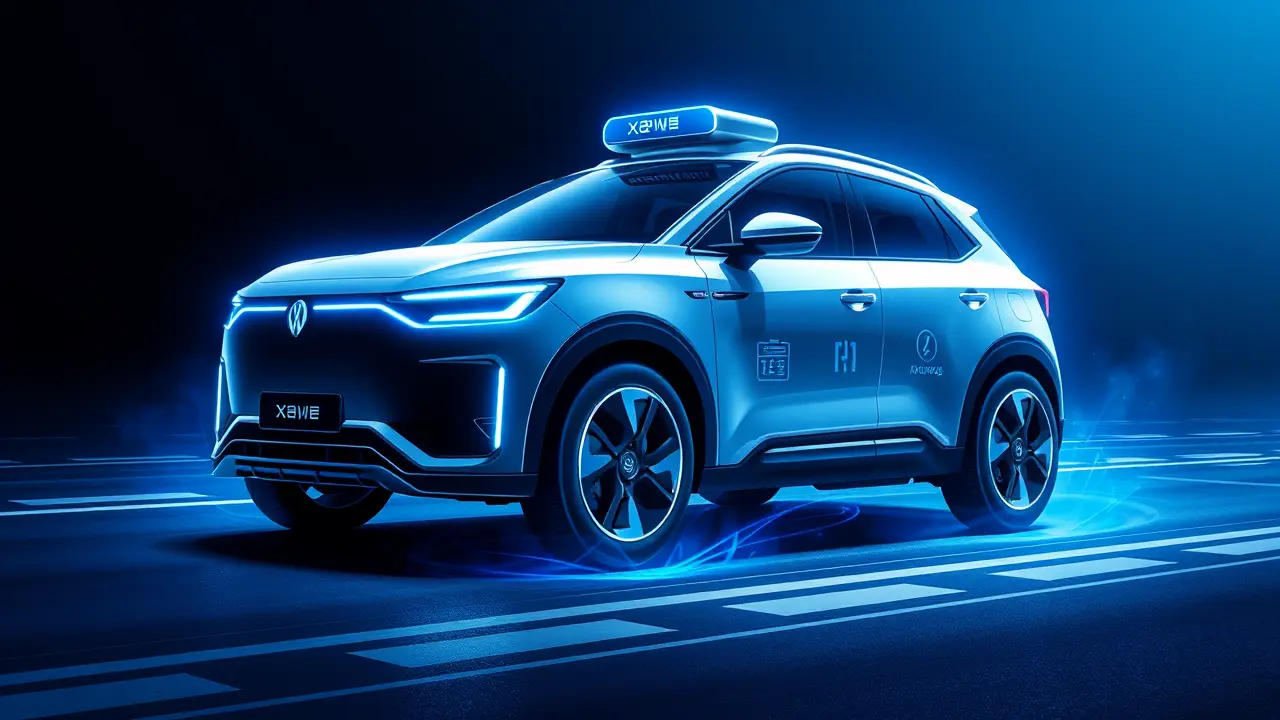
AIroboticsHumanoid Robots
Xpeng Plans 2026 Robotaxi Service Using Alibaba's Amap.
DA
Daniel Reed
13 hours ago7 min read6 comments
In a strategic maneuver that signals the accelerating convergence of artificial intelligence and practical mobility, Chinese electric vehicle manufacturer Xpeng has declared its intention to deploy a commercial robotaxi service by 2026, leveraging the sophisticated mapping infrastructure of Alibaba Group's Amap. This announcement, delivered by Chairman and CEO He Xiaopeng, transcends a mere product roadmap; it represents a foundational shift in how AI capabilities, specifically the company's newly unveiled vision language action (VLA) model, are being engineered from laboratory concepts into tangible, market-ready services.The planned fleet of three distinct robotaxi models, intriguingly presented alongside a humanoid robot and two flying car concepts, is not a random assortment of futuristic gadgets but a cohesive ecosystem designed to woo consumers and investors alike by demonstrating a unified AI brain capable of navigating the complex, unstructured chaos of real-world environments. This ambition places Xpeng in direct contention with global leaders like Tesla's Full Self-Driving and Waymo's extensive testing, yet with a distinctly Chinese character, integrating deeply with a domestic digital giant like Alibaba to ensure data sovereignty and hyper-localized navigation precision.The choice of Amap is particularly astute, as its real-time traffic data, high-definition lane-level mapping, and deep integration with the Chinese urban fabric provide a data moat that foreign competitors cannot easily replicate, offering a potential edge in handling the notoriously dynamic driving conditions of megacities like Shanghai and Shenzhen. However, the path to a 2026 commercial launch is fraught with monumental challenges that extend far beyond pure technology.The regulatory landscape for fully autonomous vehicles remains a patchwork of local permissions and national guidelines, requiring Xpeng to engage in protracted dialogues with transportation authorities to establish safety certifications, liability frameworks, and insurance protocols. Public acceptance is another critical variable; overcoming the 'ghost car' unease and building trust in a machine's decision-making during a split-second emergency scenario will require extensive public demonstration and potentially flawless safety records over millions of test miles.From a technical perspective, the leap from advanced driver-assistance systems (ADAS) to Level 4 autonomy, where the vehicle handles all driving tasks in designated areas, is a chasm of complexity involving edge cases—from jaywalking pedestrians and erratic scooter drivers to sudden weather changes and ambiguous construction zones—that demand a robust and endlessly adaptable AI. Xpeng's VLA model, which aims to fuse visual perception with natural language understanding to generate driving actions, is a compelling approach, potentially allowing the system to reason about its environment in a more human-like way, interpreting a ball rolling into the street as a precursor to a child running after it, for instance.The economic implications are equally profound; a successful robotaxi rollout could fundamentally disrupt urban transportation, challenging the ride-hailing duopoly of Didi and Meituan, reducing private car ownership in dense urban centers, and creating new, software-defined revenue streams for Xpeng that dwarf the one-time sale of a vehicle. This pivot towards 'mobility-as-a-service' is a strategic hedge against the brutal price wars in the EV manufacturing sector, allowing the company to monetize its AI software platform continuously.Furthermore, the simultaneous development of a humanoid robot and flying cars suggests a grander vision where a single, powerful AI architecture can be scaled and adapted across multiple form factors—terrestrial, bipedal, and aerial—a concept that echoes the pursuit of artificial general intelligence (AGI) in its quest for a versatile, cross-domain reasoning engine. As 2026 approaches, the industry will be watching closely to see if Xpeng can execute this complex symphony of hardware engineering, software intelligence, regulatory navigation, and market creation, a feat that would not only cement China's position at the forefront of the autonomous driving race but also redefine our very relationship with the automobile.
#featured
#Xpeng
#robotaxi
#Alibaba Amap
#autonomous driving
#AI model
#VLA
#electric vehicles
Stay Informed. Act Smarter.
Get weekly highlights, major headlines, and expert insights — then put your knowledge to work in our live prediction markets.
Related News
© 2025 Outpoll Service LTD. All rights reserved.











